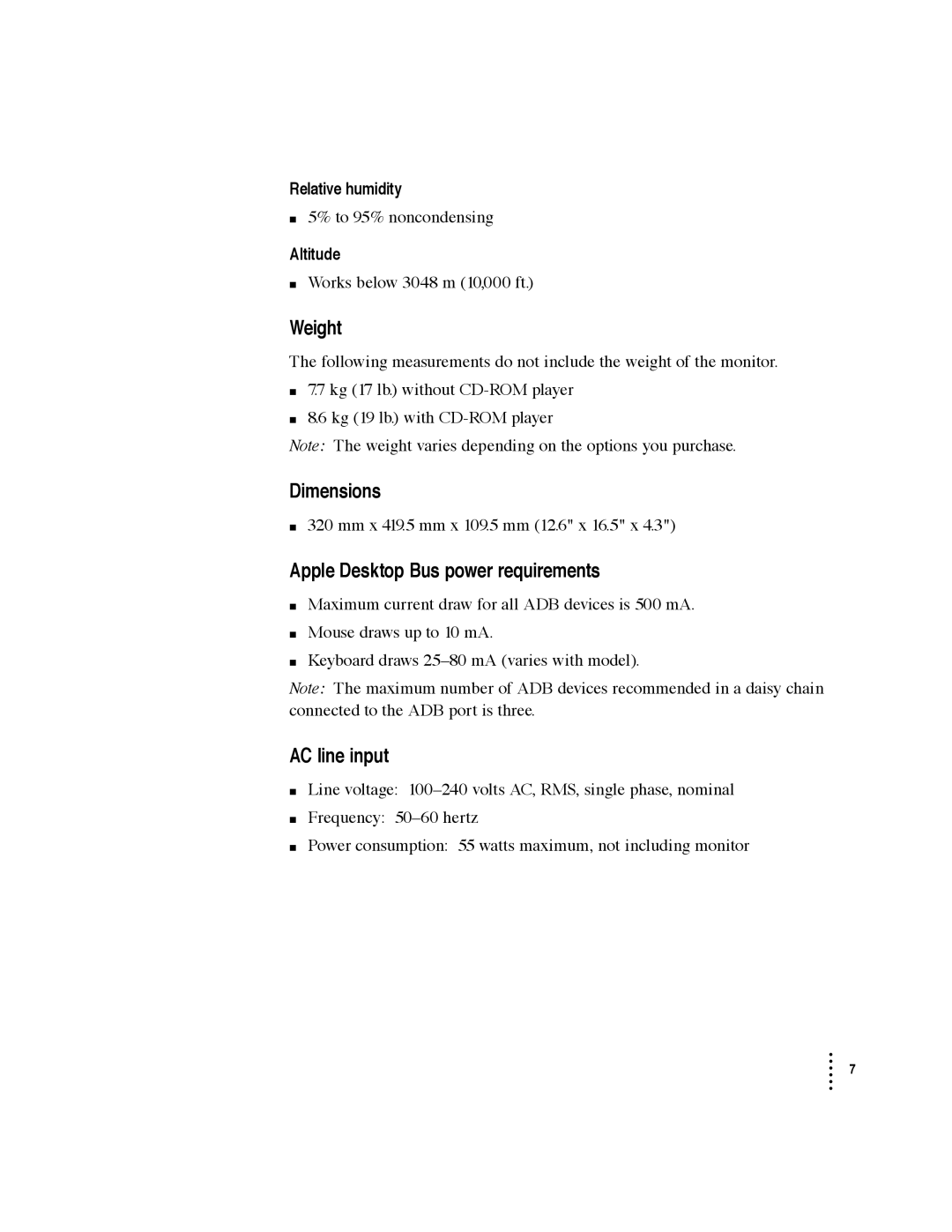6300 specifications
The Apple 6300, a notable member of the Apple Macintosh family, was introduced in the early 1990s as a part of Apple's effort to expand its desktop computing capabilities. The 6300 is particularly recognized for its combination of performance, design, and user-friendly features, which were hallmarks of Apple’s approach to personal computing during that era.One of the standout features of the Apple 6300 is its PowerPC architecture, which provided enhanced processing power and efficiency compared to its predecessors. This architecture was developed through a partnership with IBM and Motorola, marking a significant shift from the Motorola 68000 series that previously powered Macintosh computers. The integration of the PowerPC processor allowed for improved multitasking capabilities and better overall system performance, catering to a wide range of applications from productivity software to graphics-intensive tasks.
The Apple 6300 typically came equipped with a 100 MHz PowerPC 603 processor, which provided substantial speed improvements for users. It could support up to 128 MB of RAM, enabling better performance for applications that required larger amounts of memory. Additionally, the machine boasted an integrated SCSI controller for connecting external devices, which was essential for users who needed to expand their system capabilities through peripherals like printers and external storage.
Another significant characteristic of the Apple 6300 was its graphics performance. The system featured an accelerated graphics architecture that supported both 2D and 3D graphics rendering, making it suitable for graphic design, video editing, and gaming applications prevalent in the early '90s. Users appreciated the vibrant color output and clarity that the machine provided, bolstering its appeal among creative professionals.
Connectivity was also a strong point for the Apple 6300. It included both an Ethernet port for networking and multiple serial ports for connecting to various peripherals, ensuring that users had flexibility in their setup. The inclusion of a CD-ROM drive further expanded its capabilities, allowing for easy software installations and multimedia experiences.
The Apple 6300 was available in a compact desktop form factor, which was designed to save space while maximizing accessibility. Its stylish design and intuitive interface aligned with Apple's commitment to creating user-friendly products, contributing to its popularity in homes and offices alike.
In summary, the Apple 6300 represents a significant point in Apple's history, marked by advancements in processor technology, graphics capabilities, and user-centered design. Its legacy can be seen in how it paved the way for future Macintosh systems, emphasizing performance, connectivity, and ease of use.
